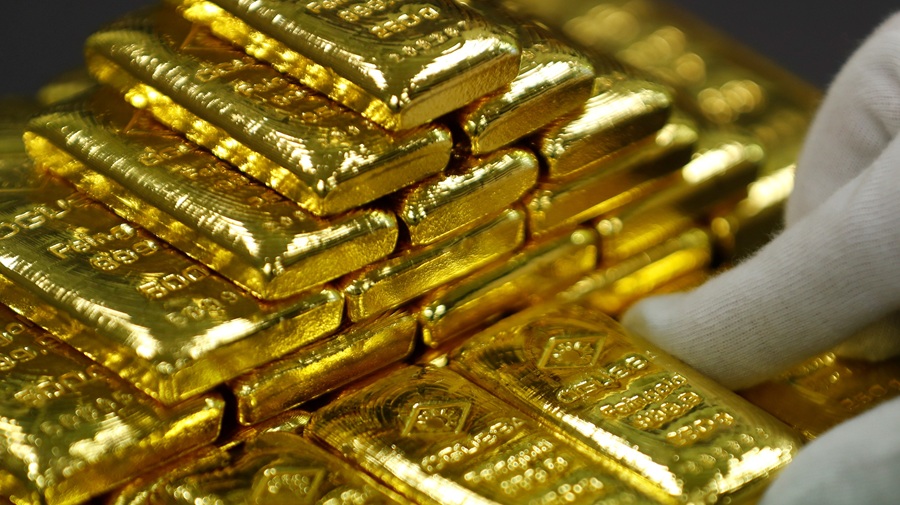China’s financial system is once again under intense scrutiny after shocking reports have emerged alleging that some of the country’s state banks have been involved in selling fake gold and counterfeit U.S. dollars. These allegations—if substantiated—threaten to unravel the tightly controlled image China’s banking sector has maintained for decades.
What was once unthinkable is now being whispered in banking halls, discussed on encrypted chat apps, and reported by daring investigative outlets: a possible meltdown in trust at the heart of China’s state-controlled financial machine.
The Scandal: Fake Gold Sold by a Major State Bank
It all began with a viral post, followed by corroboration from local Chinese media. According to High Wind News, a branch bank customer in Shanghai shared chat records suggesting involvement by a location labeled as “Nanxiang Branch.” This clue narrowed the focus to Nanxiang, a suburban town in Shanghai, and pointed fingers toward a specific institution.
Shortly afterward, Tencent News confirmed that the gold bars in question were purchased at a branch of the Industrial and Commercial Bank of China (ICBC)—one of the big four state-owned commercial banks in the country and among the largest banks in the world by total assets.
The gold, sold as investment-grade bullion, was allegedly found to be counterfeit—gilded copper, tungsten, or other non-precious materials underneath a thin layer of gold plating.
A Pattern of Deception?
While ICBC has yet to issue a formal public response, the incident echoes previous scandals, such as the Wuhan Kingold Jewelry case in 2020, where over 80 tons of gold bars used as collateral for billions in loans were later revealed to be fake. That case alone exposed over $2.8 billion in fraudulent lending tied to non-existent assets—and shook investor confidence to the core.
What makes this current situation more disturbing is the implication that counterfeit assets may be continuing to circulate within mainstream financial institutions, not fringe operators.
Fake U.S. Dollars Enter the Scene
Adding to the alarm are emerging reports of counterfeit U.S. currency allegedly distributed through Chinese banks, either unknowingly or under questionable internal controls. International financial crime experts have raised concerns that the sophistication of the fake bills suggests access to high-grade equipment—possibly even state-level resources.
While no definitive link has been proven between specific banks and the counterfeit dollar circulation, the coincidence in timing and proximity to the gold scandal is hard to ignore.
Bank Chaos Beyond Imagination
This series of events highlights a much deeper, structural concern: a breakdown of internal oversight, or worse, a willful engagement in financial deception by institutions considered the backbone of China’s economy.
At a time when China’s financial system is under immense stress—from a collapsing real estate sector to slowing GDP growth and dwindling foreign reserves—some speculate that these actions may be desperate attempts to cover shortfalls, preserve liquidity, or secure collateral at any cost.
Others warn that internal corruption, local-level mismanagement, or profit-driven rogue operations could be driving these incidents, independent of top-down policy.
The Global Fallout
The implications of state-affiliated banks engaging—directly or indirectly—in the sale of counterfeit gold or currency are staggering:
Collapse in investor confidence, particularly among international holders of Chinese gold reserves and yuan-based assets.
Risk of sanctions or tighter scrutiny on Chinese financial institutions from the U.S., EU, and international watchdogs.
Accelerated capital flight as both domestic and foreign investors seek safer havens.
Heightened demand for independent audits of Chinese banks’ reserves and gold holdings.
This is not just a national crisis—it has the potential to become a global financial shock.
Final Thoughts: A Crisis of Trust
Whether this incident proves to be an isolated case of branch-level fraud or part of a wider pattern of deception, one thing is clear: China’s banking credibility is under siege.
For a nation that has sought to position its currency and financial system as stable alternatives to the Western-dominated model, the timing couldn’t be worse.
Until there is transparency, accountability, and real reform, the specter of fake assets and chaotic banking practices will continue to haunt the system—and potentially, the global economy.
